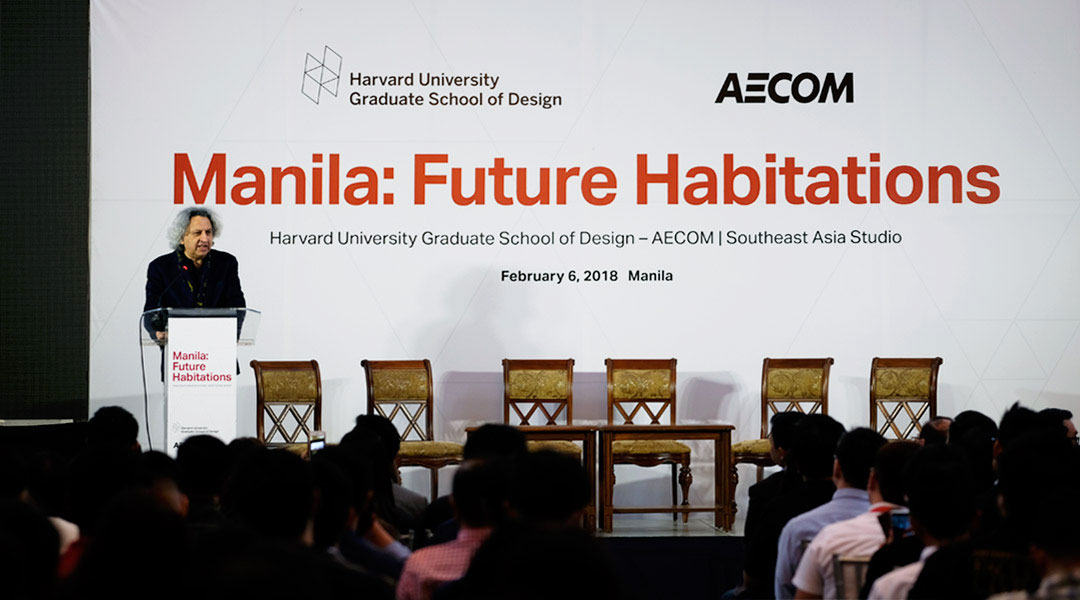
Harvard GSD-AECOM Manila Studio 2018 explores “local coherence” in four sites
The Ayuntamiento de Manila Building in Intramuros was rife with milestone events of Manila: Future Habitations, a joint project of AECOM and Harvard University Graduate School of Design (GSD) last 6 Februrary 2018. The collaboration aims to expose GSD students to the urban design challenges and opportunities in Southeast Asian megacities. The Manila Studio 2018, succeeding Jakarta and Malaysia, is the final part of the three-year series.
The focus area includes the Manila Port Area, the adjacent neighborhood of BASECO, the mercantile communities of Binondo and Tondo on the north side of the Pasig River, and walled citadel of Intramuros on the south side of the river. The studio is divided into four, with one group assigned per site. Each group is mix of students from different disciplines: architectural design, landscape architecture, and urban planning and design.
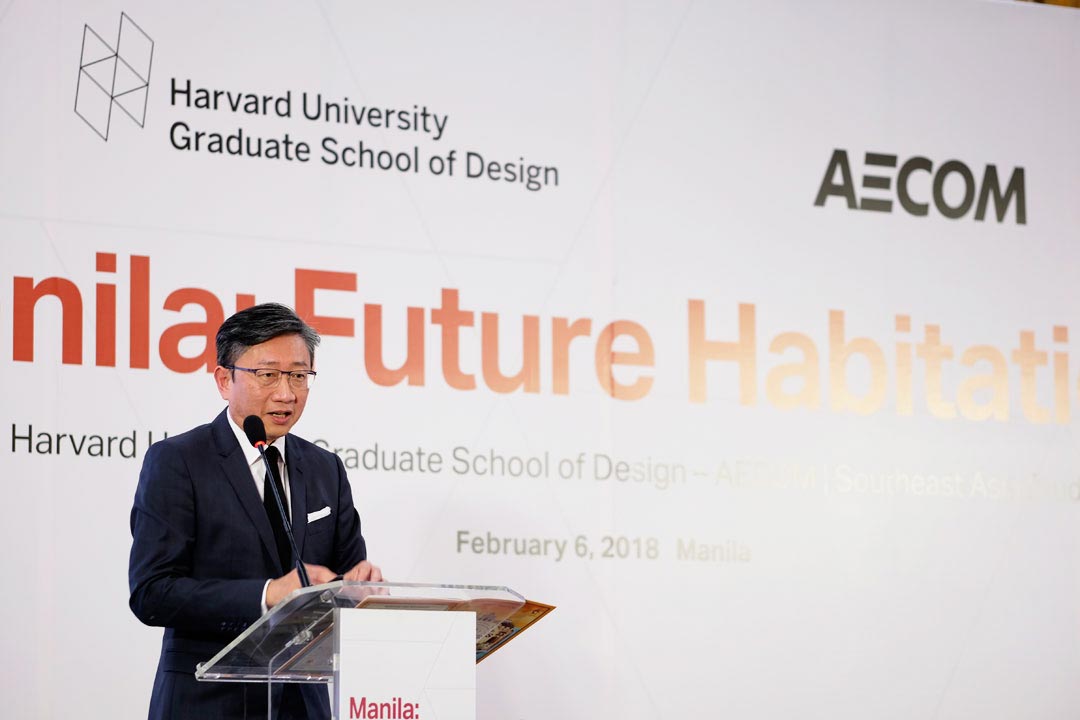
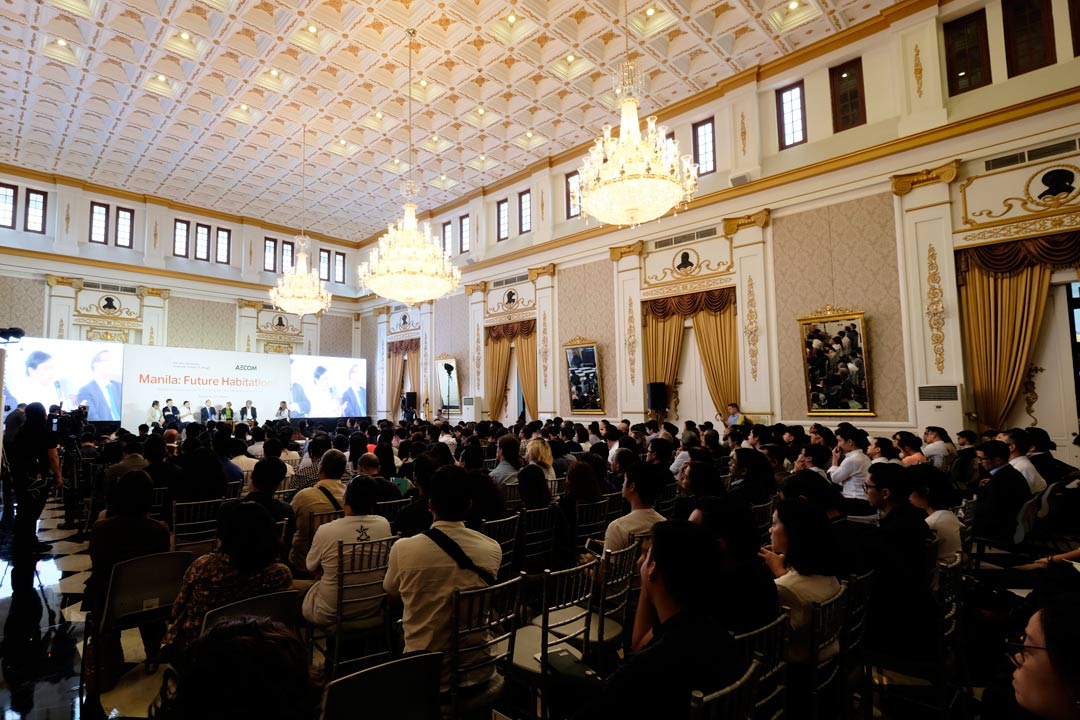
“Manila’s challenges may seem substantial, but the most critical building blocks of opportunity are present in the form of a strong economy which has been among the world’s highest performing for close to a decade; and the yearning that citizens share for a better quality of urban life. Our collaboration with Harvard Graduate School of Design to expose its top students and stakeholders in some of the region’s most dynamic cities to each other, is rooted in the belief that what we imagine together, we can deliver together,” said Sean Chiao, AECOM’s President, Asia Pacific.
After their preliminary research back at Harvard and immersion tour the day prior, the 13 students of Manila Studio 2018 attended a series of learning seminars at the Magallanes Library of the Aynutamiento. After the sessions, the students pinned up their initial ideas at the Atrium Hall and presented these to a panel composed of local urban planners, government officials, and other stakeholders.
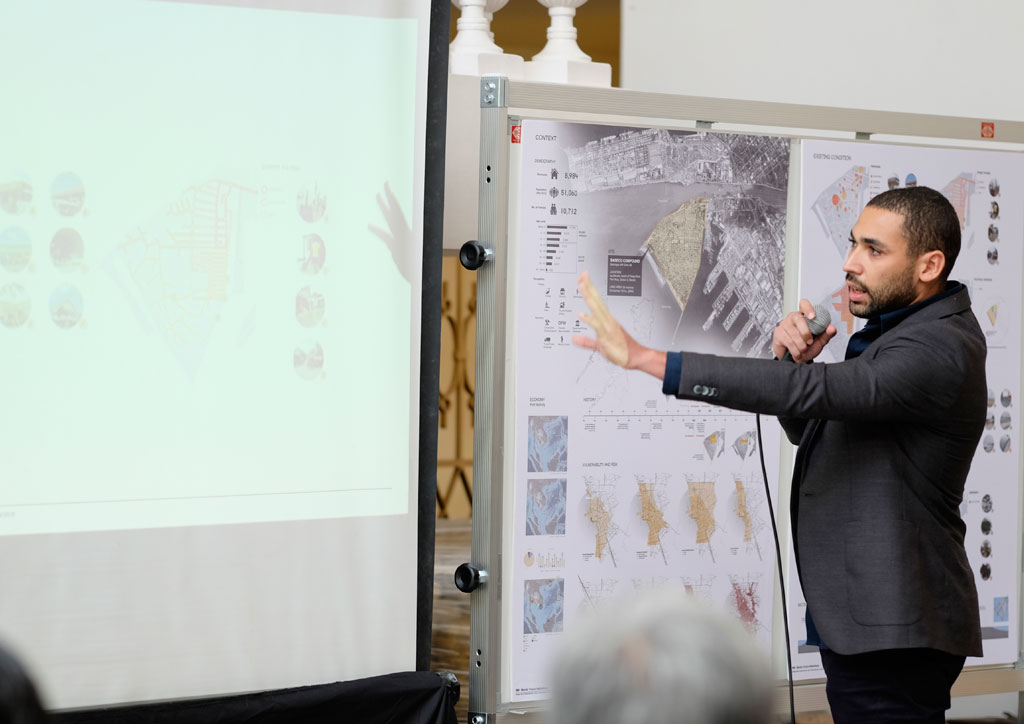
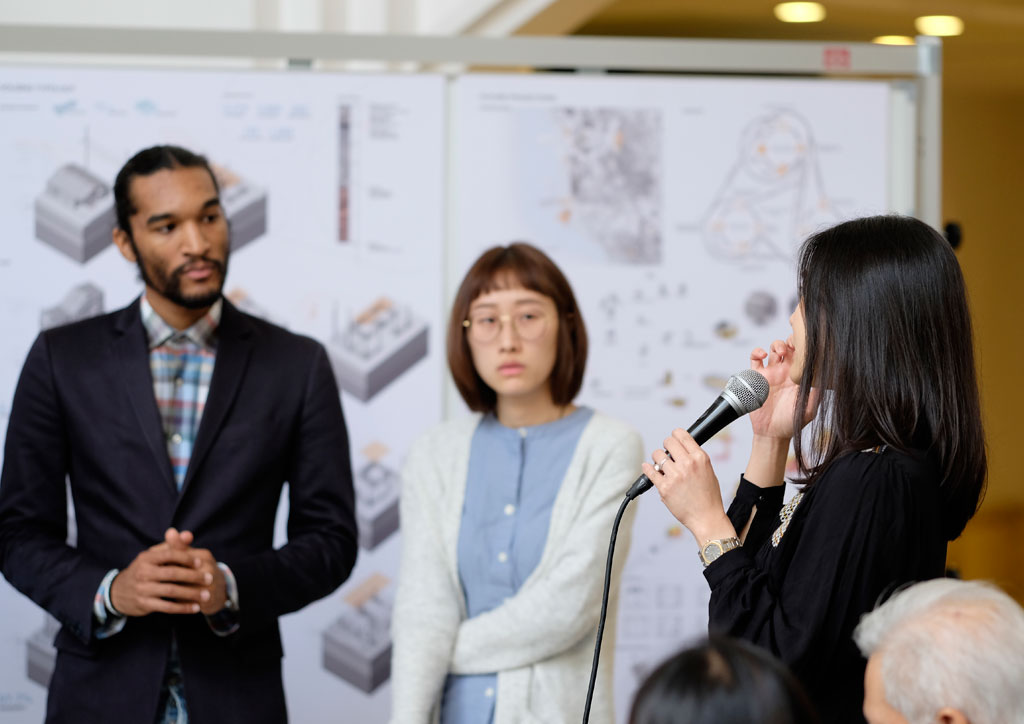
In the afternoon, over 300 participants sat down at the Marble Hall for the public forum component of the program. Speeches were delivered by Senator Sonny Angara, Mr. Mostafavi, and Mr. Chiao. Panel speakers included Jose Ma. K. Lim, president and CEO of Metro Pacific Investments Corporation; Art Corpuz, former chief planner for Ayala Land; urban poor advocate Albert Zambrano; Mario de los Reyes, Dean, University of the Philippines School of Urban and Regional Planning; and Henry Yap, General Manager, Robinsons Land Corporation.
One of the notable moments of the forum was when Manila Studio 2018 instructor Špela Videčnik recounted her own experience of Manila’s snail-paced traffic. Cheers resounded when she rhetorically asked why Filipinos have to endure the long and exhausting commutes.
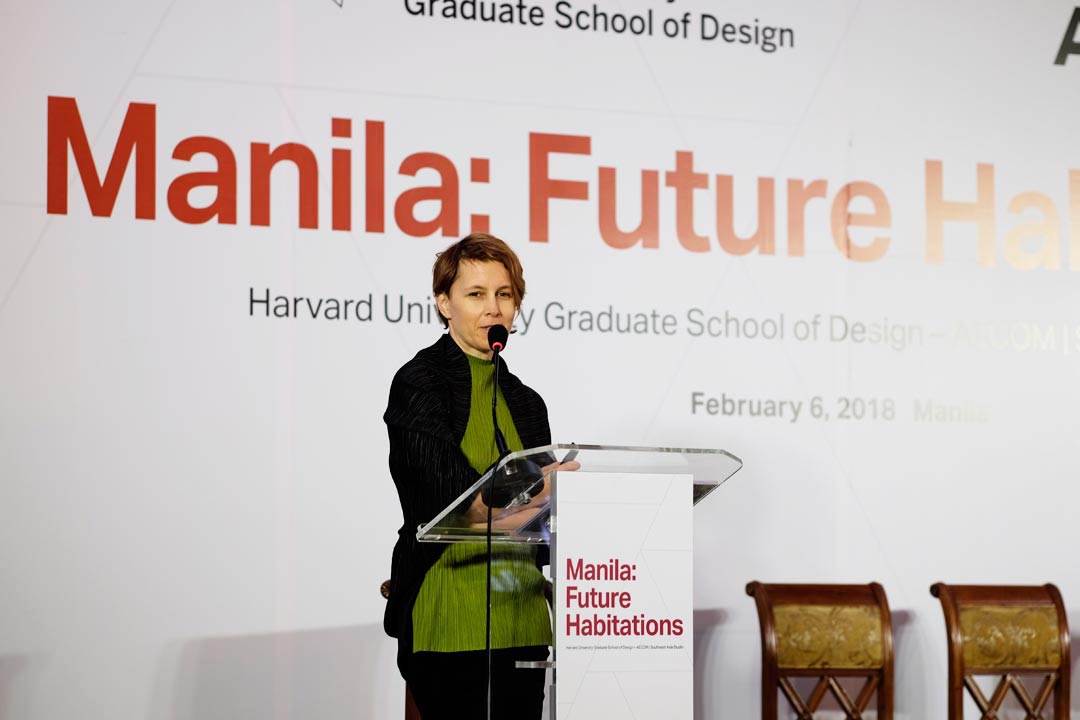
“Contemporary Greater Metro Manila, with a population of more than 25 million, is by far the largest city in our series on Southeast Asia, and arguably the most complex, with vast extremes of economic and social strata, and yet universal challenges for its citizens, such as mobility, improved ecology, and connectivity,” said Mohsen Mostafavi, Dean of the Harvard Graduate School of Design.
“Proposing solutions for the Port Area, Intramuros, Baseco, Pasig River is like ‘changing the script’ of four theater performances. You can’t apply the same system to all parts of the city. It becomes more interesting when we explore how these four places and ‘scripts’ intersect. We’re trying to find local coherence, rather than impose order. The goal of the students is to: first, build local coherence; next, deal with questions of adjacency; and lastly, find a totality which represents the different local coherences,” added Mostafavi.
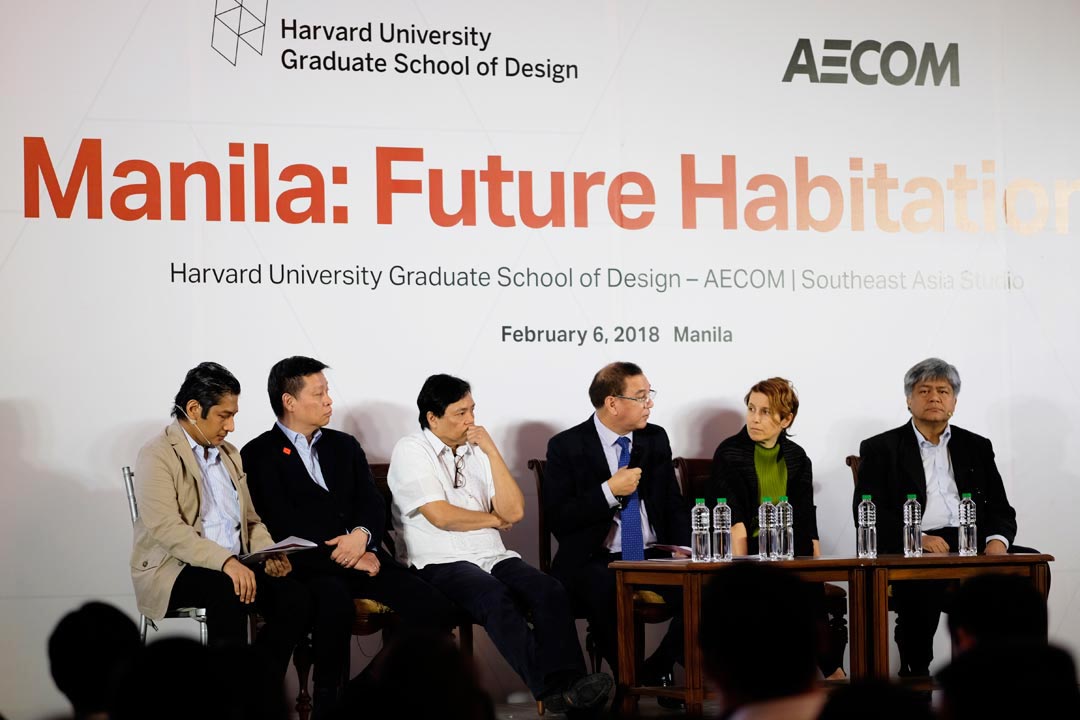
At the heart of Manila Studio 2018 is the journey towards proposing answers to a central question: How can all of Manila’s existing constraints be seen as opportunities, building upon each challenge to find lasting solutions that will resonate with Manila’s residents to unite the city across a unified urban fabric?
“We’re here to provoke people to think about their future cities. It may take generations to solve the existing problems. But, personally, I feel like you should always retain hope because many people care about the Philippines,” said Chiao.
The students and faculty will continue their six-month academic exploration at Harvard University, with the final panel defense slated for May. The final outputs are expected to be exhibited in Manila this September and will be complied in a publication by Harvard University GSD. ![]()


